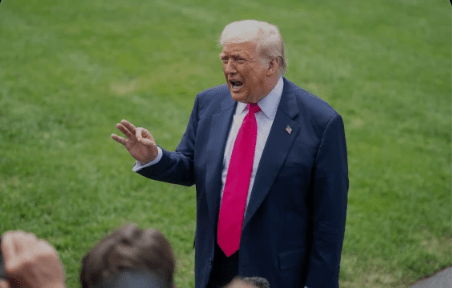The global cryptocurrency market has recently been stirred up by an 'uninvited guest'— Trump's sudden introduction of a stablecoin bill, which appears to be a routine operation to regulate the cryptocurrency industry but actually conceals a covert 'global buyer' plan. This operation can be called a 'high-difficulty acrobatics' in finance, shifting the blame for the U.S. debt crisis while quietly harvesting global wealth; today we will peel back this layer of disguise.

First, let's look at a shocking set of data: U.S. national debt has surpassed 37 trillion dollars. What does that mean? Even if we were to disband the military immediately and use the hundreds of billions in annual military spending to repay debt, it wouldn't even cover the interest. The U.S. government has been as anxious as ants on a hot pan, trying two paths that led nowhere: either defaulting outright on creditors, realizing the balance of power on both sides, or trying to undermine the creditors' economies through financial warfare, only to find their fundamentals as stable as a mountain. As conventional methods failed, Trump played the 'ultimate trump card' of stablecoins.
Stablecoins, to put it simply, are 'globally usable cryptocurrency tokens', pegged 1:1 to the U.S. dollar. But the sharpness of Trump's bill lies in: Want to issue stablecoins? You must first buy U.S. debt or deposit dollars as collateral. This directly binds stablecoins to U.S. Treasury bonds, forming a mandatory closed loop of 'using stablecoins means taking on U.S. debt'.
Previously, no one wanted U.S. debt, and major countries like Japan and China were continuously selling off; Trump's team was in a bind. Now, with this mechanism in place, it means that everyone using stablecoins around the world is helping the U.S. fill its gaps. Are you trading cryptocurrencies on an exchange using USDT? You're indirectly buying U.S. debt; Argentinians are using stablecoins to hedge against 100% inflation? The money ultimately flows into the U.S. Treasury bond pool; businesses using stablecoins for cross-border transfers to save on fees? Unknowingly becoming the buyers of U.S. bonds.
What's even more astounding is that people have no choice. 90% of transactions in the virtual currency market rely on stablecoin settlements, just like online shopping relies on Alipay; citizens in high-inflation countries can only flock to stablecoins for safety; traditional cross-border transfers take 3 days to settle with a 5% fee, while stablecoins settle in 10 seconds with only a 0.1% fee, making it impossible for businesses to refuse this cost advantage.
Data doesn't lie: Currently, USDT holds 120 billion in U.S. Treasury bonds, a figure that exceeds the holdings of the German central bank. Following this trend, by 2030 the stablecoin market size could reach 2 trillion dollars, just enough to cover the additional debt gap incurred during Trump's term. Ironically, the Trump family has also taken the opportunity to issue 'Trump Coin' and 'Melania Coin', making hundreds of millions of dollars off this wave of policy.
Isn't this just politicians doing financial regulation? Clearly, it's businessmen playing the 'double profit' trick— using global wealth to back U.S. Treasury bonds while also making a profit in the cryptocurrency market.
How many 'global buyer' tricks are hidden in the next wave of cryptocurrency regulation? Follow me to pierce through the financial facade and understand the flow of wealth behind every policy. Do you think stablecoins will become the ultimate tool for the U.S. to shift its debt? Share your thoughts in the comments.

